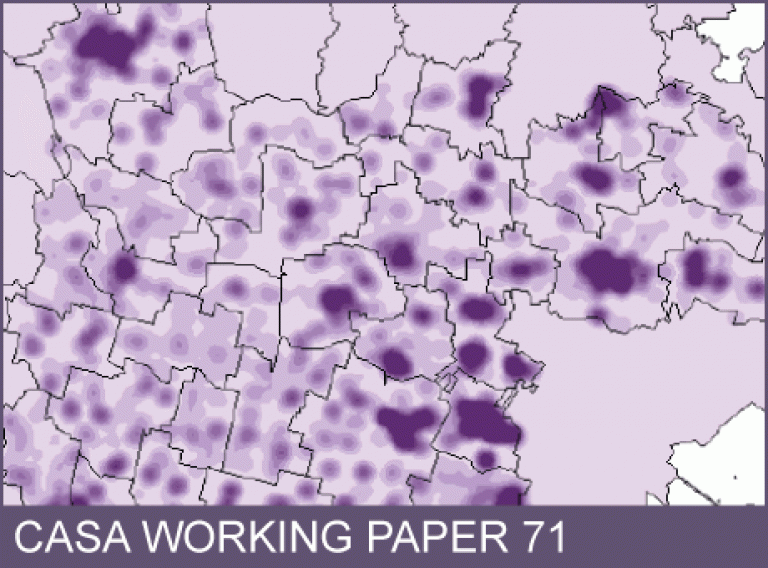CASA Working Paper 71

1 November 2003
Representing Multifunctional Cities: Density and Diversity in Space and Time
In this paper, we define measures of urban diversity, density and segregation using new data and software systems based on GIS. These allow us to visualise the meaning of the multifunctional city. We begin with a discussion of how cities have become more segregated in their land uses and activities during the last 200 years and how the current focus is on reversing this trend through limiting urban sprawl and bringing new life back to the inner and central city. We define various indices which show how diversity and density manifest themselves spatially.
We argue that multifunctionalism is a relative concept, dependent upon the spatial and temporal scale that we use to think about the mixing and concentration of urban land uses. We present three examples using spatially smoothed indicators of diversity: for a world city - London, for a highly controlled polycentric urban region - Randstad Holland, and for a much more diffusely populated semi-urban region - Venice-Padua-Teviso. We conclude by illustrating that urban diversity varies as people engage in different activities associated with different land uses throughout the day, as well as through the vertical, third dimension of the city. This impresses the point that we need to understand multifunctional cities in all their dimensions of space and time.
This working paper is available as a PDF. The file size is 1.92MB.
Authors: Michael Batty, Elena Besussi, Kees Maat, Jan Jaap Harts
Publication Date: 1/11/2003
 Close
Close

